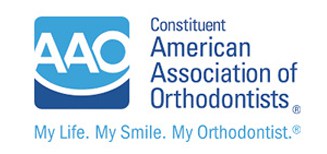What is Phase One Orthodontics?
Early treatment (also known as Phase One) typically begins around age eight or nine (Phase Two will begin around age 11 or older). Early treatment aims to correct the growth of the jaw and certain bite problems, such as underbite. It also helps to make room for permanent teeth to come in properly, lessening the chance of extractions in the future.
Many parents are concerned that Phase One treatment is too early to make a difference for their child’s permanent teeth – but it’s quite the contrary! Phase One is the most important step in orthodontics and children under the age of 10 have the best opportunity to prevent serious alignment issues in the future with this step.
Lee Orthodontics can more accurately measure and predict results when treatment begins early, it also helps our team have more control during Phase Two and results in less invasive treatments, less time with corrective procedures, and less money!
Why Start So Early?
So, why is 7 the ideal age? By age 6 or 7, a child’s first adult molars have finished erupting, establishing the back bite. This allows the team at Smile Lee Orthodontics to evaluate tooth relationships in detail, making it possible to identify potential orthodontic problems that need correction. Not all children will need treatment at this early age, but if early treatment is necessary, it greatly improves the overall orthodontic result.
While it isn’t right for all patients, early orthodontic treatment comes with a range of advantages. Treating early allows us to shape the development of the teeth and mouth, letting us make significant alterations to tooth alignment that would be much more difficult in later years. Because the upper jaw has yet to solidify into a single bone during childhood, we can use a device called a palatal expander to gently widen the upper jaw and make more room for teeth – a process that would require extensive oral surgery in later adolescence or adulthood.
Here are just a few of the benefits of Phase One Orthodontics:
- Makes more room for crowded teeth without surgery
- Prevents the need for tooth extraction
- Improves facial symmetry by influencing jaw growth
- Protects protruding front teeth from trauma
- Reduces the overall amount of time a child will spend in braces
Signs of Orthodontic Problems in Children
As a parent, there are signs that your child may benefit greatly from Phase One Orthodontics. Those include:
- Crowding of the teeth
- Too much space between the teeth
- Jaw growth problems
- Protruding teeth
- Early or late loss of baby teeth
- Thumb-sucking habits.
- Speech Impediments
- Mouth Breathing
- Difficulty Chewing
Most children lose all their baby teeth by age 13, and by the end of their teen years, the jaw bones will harden and stop growing. Orthodontic procedures for adults often take more time and can involve tooth extraction or oral surgery. Receiving early orthodontic treatment as a child can help prevent the need for orthodontics as an adult, leaving little to no chance of extraction or surgery in the future.
If your child is between the ages of seven and eight and shows signs of needing orthodontic care, or if you have been directed by your family dentist to visit the orthodontist, please contact our practice and schedule an appointment. Our team will provide your child with an initial exam, and discuss with you the best steps to take toward caring for your child’s smile.




